样式: 排序: IF: - GO 导出 标记为已读
-
A force-inspired paradigm for performance-based decision support—Physics of Decision application in nonlinear dynamical systems J. Ind. Inf. Integr. (IF 10.4) Pub Date : 2024-06-28 Nafe Moradkhani, Frederick Benaben, Benoit Montreuil, Matthieu Lauras, Thibaut Cerabona, Clara Le Duff, Louis Faugere, Julien Jeany
This paper provides a perspective on performance-based decision support. The chosen approach is based on the principles of “Physics of Decision”, which considers the performance of a system as a physical trajectory within the boundaries of its performance indicators that might be deviated through variation of system parameters. According to the overall premise of employing the state-space method to
-
Domain-specific languages for the automated generation of datasets for industry 4.0 applications J. Ind. Inf. Integr. (IF 10.4) Pub Date : 2024-06-25 Brian Sal, Diego García-Saiz, Alfonso de la Vega, Pablo Sánchez
Data collected in Industry 4.0 applications must be converted into tabular datasets before they can be processed by analysis algorithms, as in any data analysis system. To perform this transformation, data scientists have to write complex and long scripts, which can be a cumbersome process. To overcome this limitation, a language called Lavoisier was recently created to facilitate the creation of datasets
-
A green scheduling model for two-stage photo-etching and acid-etching collaboration in semiconductor manufacturing J. Ind. Inf. Integr. (IF 10.4) Pub Date : 2024-06-20 Min Kong, Yajing Zhang, Jin Xu, Weizhong Wang, Shaojun Lu, Amir M. Fathollahi-Fard
In semiconductor manufacturing, photo-etching and acid-etching processes play crucial roles in precisely crafting intricate patterns on storage chip wafers. However, these processes generate significant hazardous waste, leading to high disposal costs. Consequently, there has been increased research into cost-effective and environmentally friendly solutions. This study introduces a custom green scheduling
-
Adaptive optimization federated learning enabled digital twins in industrial IoT J. Ind. Inf. Integr. (IF 10.4) Pub Date : 2024-06-19 Wei Yang, Yuan Yang, Wei Xiang, Lei Yuan, Kan Yu, Álvaro Hernández Alonso, Jesús Ureña Ureña, Zhibo Pang
-
Assessment of process chain suitability of the optical 3D measuring system by using influencing factors for measurement uncertainty J. Ind. Inf. Integr. (IF 10.4) Pub Date : 2024-06-14 Martin Bilušić, Luka Olivari
Optical 3D measuring systems serve as indispensable tools for the measurement and quality control of complex objects feeding process chains in industrial information integration. However, the accuracy of 3D measurements is influenced by a multitude of parameters, and the associated measurement uncertainties and influential factors remain insufficiently researched. This study investigates the effects
-
Towards an extensible model-based digital twin framework for space launch vehicles J. Ind. Inf. Integr. (IF 10.4) Pub Date : 2024-06-13 Ran Wei, Ruizhe Yang, Shijun Liu, Chongsheng Fan, Rong Zhou, Zekun Wu, Haochi Wang, Yifan Cai, Zhe Jiang
The concept of Digital Twin (DT) is increasingly applied to systems on different levels of abstraction across domains, to support monitoring, analysis, diagnosis, decision making and automated control. Whilst the interest in applying DT is growing, the definition of DT is unclear, neither is there a clear pathway to develop DT to fully realise its capacities. In this paper, we revise the concept of
-
Improving efficiency and quality of operational industrial production assets information management in customer–vendor interaction J. Ind. Inf. Integr. (IF 10.4) Pub Date : 2024-06-13 Daniel Pakkala, Jukka Kääriäinen, Teemu Mätäsniemi
Industrial assets management has a key role in ensuring continuity of industrial production via purchasing, warehousing and maintenance of devices and spare parts used in manufacturing, but it suffers from data and information accessibility, completeness, consistency, interoperability, and timeliness challenges in the customer - equipment vendors interaction and information sharing. Current practices
-
A three-stage digital maturity model to assess readiness for blockchain implementation in the maritime logistics industry J. Ind. Inf. Integr. (IF 10.4) Pub Date : 2024-06-06 Seyed Mohammad Mahdi Hamidi, Seyed Farzad Hoseini, Hadi Gholami, Mohammad Kananizadeh-Bahmani
Interesting opportunities lie in digital technologies, such as blockchain, as enablers of further digital development in maritime logistics processes. Marine companies must assess their digital maturity using appropriate models to gain a competitive advantage through digital transformation. Therefore, it is crucial to present a novel and empirical maturity model for assessing blockchain implementation
-
An innovative approach for cluster head selection and Energy Optimization in wireless sensor networks using Zebra Fish and Sea Horse Optimization techniques J. Ind. Inf. Integr. (IF 10.4) Pub Date : 2024-06-04 Michaelraj Kingston Roberts, Poonkodi Ramasamy, Fadl Dahan
In recent times, Wireless Sensor Networks (WSNs) have become an indispensable technology across various industries, offering diverse applications and services. Among the crucial performance metrics for WSNs, optimal cluster head (CH) selection and energy efficiency are paramount for cost-effective network operations. This paper proposes a novel approach for WSNs that tackles both challenges using Zebra
-
Blockchain application to the processes in material design, production, distribution, and disposal: A survey J. Ind. Inf. Integr. (IF 10.4) Pub Date : 2024-05-28 Diego Segura Ibarra, Fan Li, Jianjun Zhu, Jinyuan Chen
Data is a valuable resource that can facilitate the development of advanced products sustainably and transparently. However, issues like data manipulation, forgery, and deletion can damage data reliability, limiting its use during product development. In this paper, we aim to identify and explore solutions that relieve data reliability concerns throughout the life of a product. Specifically, we investigate
-
Re-imagining intelligent machines in an anthropocentric-ecocentric continuum: The case for ecocentric intelligent machines J. Ind. Inf. Integr. (IF 10.4) Pub Date : 2024-05-26 Didem Gürdür Broo, Joshua C. Gellers, Henrik Skaug Sætra
The history of machines traces back to the dawn of human civilization, reflecting the intertwined journey of exploration, invention, and discoveries. From ancient simple machines to remarkable innovations like the Antikythera mechanism and automatons, the evolution of machines has been a testament to human ingenuity. In the 21st century, a new era of machines emerges, characterized by intelligence
-
Efficient large-scale biomedical ontology matching with anchor-based biomedical ontology partitioning and compact geometric semantic genetic programming J. Ind. Inf. Integr. (IF 10.4) Pub Date : 2024-05-24 Xingsi Xue, Donglei Sun, Achyut Shankar, Wattana Viriyasitavat, Patrick Siarry
Biomedical ontology offers a structured framework to model the biomedical knowledge in a machine-readable format. However, the heterogeneity inherent in biomedical ontologies hinders their communication. Biomedical Ontology Matching (BOM) can address this issue by identifying equivalent concepts in biomedical ontologies. Recently, Evolutionary Algorithms (EAs) based matching techniques have exhibited
-
An interactive framework to support decision-making for Digital Twin design J. Ind. Inf. Integr. (IF 10.4) Pub Date : 2024-05-23 H M Carlin, P A Goodall, R I M Young, A A West
Producing a Digital Twin (DT) involves many inter-linking decisions. Existing research tends to describe the parts of a DT and how they work, but not the decision-making that goes into building a DT nor the consideration of alternative design options. There is therefore a need for decision support to guide developers to create DTs efficiently while meeting functional requirements such as accuracy and
-
Analyzing the impact of cyber-attacks on the performance of digital twin-based industrial organizations J. Ind. Inf. Integr. (IF 10.4) Pub Date : 2024-05-15 Ridwan Mustofa, Md. Rafiquzzaman, Niamat Ullah Ibne Hossain
Digital twin is a virtual copy of their “real-world counterparts”, which refer to physical objects, systems, or entities that exist in the physical world. They share valuable information about how the system works by connecting the replica with the real product via the internet and sensors. In digital twin organizations, industrial control systems and the internet are the main sources of data collection
-
An application-time-window based credibility assessment method for equipment digital twins in manufacturing J. Ind. Inf. Integr. (IF 10.4) Pub Date : 2024-05-15 Han Lu, Lin Zhang, Kunyu Wang, Hongbo Cheng
To effectively assess the credibility of equipment digital twins (DT) for manufacturing, a new method fully considering the dynamic evolution process is urgently needed. In this paper, the influence of the evolution process on the applications is scrutinized, the connotation of equipment DT credibility assessment is expanded, and an assessment method to evaluate the general evolution process of equipment
-
Exploring the relationship between routing policies and market demand heterogeneity: A simulation analysis with different hardware and software configurations in traditional warehouses J. Ind. Inf. Integr. (IF 10.4) Pub Date : 2024-05-14 Michele Bocelli, Eleonora Bottani, Andrea Volpi, Federico Solari, Natalya Lysova, Roberto Montanari
This study presents a simulative tool designed to evaluate quantitatively the performance of the order picking process in a traditional warehouse with double-sided racks; performance is measured as the distance covered by the picker when carrying out a single task. Using the simulation tool, different warehouse configurations can be generated by changing both hardware (shape factor and input-output
-
Certificateless anti-quantum blind signcryption for e-cash J. Ind. Inf. Integr. (IF 10.4) Pub Date : 2024-05-10 Huifang Yu, Qi Zhang, Lei Li
Electronic cash (e-cash) has become major payment way in the era of internet of things. However, the leakage of user privacy and transaction data is becoming more and more serious in e-cash system. To solve these problems, we construct a new certificateless blind signcryption from NTRU lattice (NTRUL-CLBSC) suitable for e-cash. NTRUL-CLBSC has low communication overhead and high calculation efficiency
-
The role of ontologies in smart contracts: A systematic literature review J. Ind. Inf. Integr. (IF 10.4) Pub Date : 2024-05-08 Johnny Alvarado Dominguez, Silvio Gonnet, Marcela Vegetti
The aim of this systematic literature review is to provide a comprehensive understanding of how ontologies address current Smart Contract challenges, identify application scenarios, and present tools and technologies associated with their use. This systematic literature review (SLR), following Kitchenham's methodology, analyses peer-reviewed articles from 2015 to August 2022 from databases such as
-
A multi-criteria decision-making approach for pressurized water reactor based on hesitant fuzzy-improved cumulative prospect theory and 2-additive fuzzy measure J. Ind. Inf. Integr. (IF 10.4) Pub Date : 2024-05-06 Xuanyu Wu, Yixiong Feng, Shanhe Lou, Zhiwu Li, Bingtao Hu, Zhaoxi Hong, Hengyuan Si, Jianrong Tan
As one of the world's largest energy consumers, China has paid much attention to the development of non-fossil energy sources. The nuclear power is regarded as the top priority for development due to its remarkable ecological and economic advantages. Given the large investment, long lifecycle, and rigorous quality control, the conceptual design plays a critical role in the pressurized water reactor
-
A critical analysis of the industrial device scanners’ potentials, risks, and preventives J. Ind. Inf. Integr. (IF 10.4) Pub Date : 2024-05-04 Mohammad Borhani, Gurjot Singh Gaba, Juan Basaez, Ioannis Avgouleas, Andrei Gurtov
Industrial device scanners allow anyone to scan devices on private networks and the Internet. They were intended as network security tools, but they are commonly exploited as attack tools, as scanning can reveal vulnerable devices. However, from a defensive perspective, this vulnerability disclosure could be used to secure devices if characteristics such as type, model, manufacturer, and firmware could
-
Learnable faster kernel-PCA for nonlinear fault detection: Deep autoencoder-based realization J. Ind. Inf. Integr. (IF 10.4) Pub Date : 2024-05-03 Zelin Ren, Yuchen Jiang, Xuebing Yang, Yongqiang Tang, Wensheng Zhang
Kernel principal component analysis (KPCA) is a well-recognized nonlinear dimensionality reduction method that has been widely used in nonlinear fault detection tasks. As a kernel trick-based method, KPCA inherits two major problems. First, the form and the parameters of the kernel function are usually selected blindly, depending seriously on trial-and-error. As a result, there may be serious performance
-
Modeling and optimization algorithm for energy-efficient distributed assembly hybrid flowshop scheduling problem considering worker resources J. Ind. Inf. Integr. (IF 10.4) Pub Date : 2024-05-03 Fei Yu, Chao Lu, Lvjiang Yin, Jiajun Zhou
Considering increasingly serious environmental issues, sustainable development and green manufacturing have received much attention. Meanwhile, with the development of economic globalization and requirement of customization production, distributed hybrid flowshop scheduling problem (DHFSP) and assembly shop problem (ASP) have widely existed in realistic manufacturing systems. In addition to machine
-
A novel decision support system based on computational intelligence and machine learning: Towards zero-defect manufacturing in injection molding J. Ind. Inf. Integr. (IF 10.4) Pub Date : 2024-04-30 Jiun-Shiung Lin, Kun-Huang Chen
Real-time monitoring solutions have gained popularity across industries due to the advent of Industry 4.0, AI, and big data enhancing the efficiency of industrial production and equipment decisions. Machine learning models that possess computing intelligence and interpretability provide superior predictive capabilities compared to manual adjustments, resulting in cost savings and manufacturing high-quality
-
Design ontology for cognitive thread supporting traceability management in model-based systems engineering J. Ind. Inf. Integr. (IF 10.4) Pub Date : 2024-04-30 Shouxuan Wu, Guoxin Wang, Jinzhi Lu, Zhenchao Hu, Yan Yan, Dimitris Kiritsis
Industrial information integration engineering (IIIE) is an interdisciplinary field to facilitate the industrial information integration process. In the age of complex and large-scale systems, model-based systems engineering (MBSE) is widely adopted in industry to support IIIE. Traceability management is considered the foundation of information management in MBSE. However, a lack of integration between
-
Information-integration-based optimal coverage path planning of agricultural unmanned systems formations: From theory to practice J. Ind. Inf. Integr. (IF 10.4) Pub Date : 2024-04-21 Jian Chen, Tao Chen, Yi Cao, Zichao Zhang, Wenxin Le, Yu Han
Industrial information integration engineering (IIIE) is an innovative research subject for analyzing complicated and large-scale systems. Autonomous and efficient path coverage of unmanned systems formations is an important subject of intelligent industrial agriculture. As one typical kind of complicated systems, agricultural unmanned systems formations are urgently required to optimize their operating
-
Analyzing the barriers to resilience supply chain adoption in the food industry using hybrid interval-valued fermatean fuzzy PROMETHEE-II model J. Ind. Inf. Integr. (IF 10.4) Pub Date : 2024-04-19 Weizhong Wang, Yi Wang, Yu Chen, Muhammet Deveci, Seifedine Kadry, Witold Pedrycz
The resilient food supply chain (RFSC) has been identified as an effective model for mitigating food supply chain (FSC) risks. However, there exist many barriers impacting the implementation of the RFSC. Further, previous studies seldom utilize integrated decision models for identifying and ranking the barriers to implementing RFSC within uncertain environments. Thus, the study establishes an interval-valued
-
Multi-position industrial defect inspection using self-training siamese networks with mix strategies J. Ind. Inf. Integr. (IF 10.4) Pub Date : 2024-04-18 Fangjun Wang, Xurong Chi, Liangwu Wei, Yanzhi Song, Zhouwang Yang
-
Building a knowledge graph to enrich ChatGPT responses in manufacturing service discovery J. Ind. Inf. Integr. (IF 10.4) Pub Date : 2024-04-18 Yunqing Li, Binil Starly
-
Estimating adaptation effort in industry 4.0-enabled systems: Introducing two complexity indices with an evolvable network graph approach J. Ind. Inf. Integr. (IF 10.4) Pub Date : 2024-04-17 Mohammed M. Mabkhot, Pedro Ferreira, William Eaton, Niels Lohse
One of the key aims of Industry 4.0 is to create more responsive systems. Responsiveness enables coping with new market requirements or introducing new products, as demonstrated by the COVID-19 challenges. However, there are currently no effective methods for measuring the responsiveness or reconfigurability of a system, or for quantifying the effort required to adapt it from one state to another.
-
PFDup: Practical Fuzzy Deduplication for Encrypted Multimedia Data J. Ind. Inf. Integr. (IF 10.4) Pub Date : 2024-04-17 Shuai Cheng, Zehui Tang, Shengke Zeng, Xinchun Cui, Tao Li
Redundant data wastes cloud storage space, especially the multimedia data which comprises a large number of similar files and accounts for the majority of cloud storage. To protect privacy and eliminate redundancy in the cloud, fuzzy deduplication for encrypted multimedia data is practical and feasible. Unfortunately, existing fuzzy deduplications depend on aided server to be against security threats
-
Data-driven quasi-convex method for hit rate optimization of process product quality in digital twin J. Ind. Inf. Integr. (IF 10.4) Pub Date : 2024-04-16 Yang Yang, Jian Wu, Xiangman Song, Derun Wu, Lijie Su, Lixin Tang
Hit rate is an important quantitative criterion for the process product quality prediction of the integrated industrial processes. The hit rate indicates the percentage of product quantities accepted by the downstream process within the controlled range of the product quality. The optimization model of the hit rate criterion is a non-convex intractable problem. In order to improve the hit rate of the
-
An advanced cooperative multi-hive drone swarm system for global dynamic multi-source information awareness J. Ind. Inf. Integr. (IF 10.4) Pub Date : 2024-04-08 Jinkun Men, Chunmeng Zhao
With the advancement of unmanned aerial vehicle technology, dynamic monitoring with drones has been widely adopted to enhance multi-source information awareness capabilities. The cooperative strategy among drones still poses a significant challenge. Redundant actions within the drone swarm system can lead to a noticeable decrease in awareness performance. In this work, an advanced cooperative multi-hive
-
An integrated temporal and spatial synchronization for two-echelon vehicle routing problem in waste collection system J. Ind. Inf. Integr. (IF 10.4) Pub Date : 2024-04-06 Golman Rahmanifar, Mostafa Mohammadi, Mostafa Hajiaghaei-Keshteli, Gaetano Fusco, Chiara Colombaroni
This paper presents a two-echelon vehicle routing problem (2E-VRP) with vehicle synchronization at meeting points for the reverse logistic network to collect waste in the urban area. Low-capacity vehicles are utilized to perform collection only in the inner part of the city because of restricted access and limited infrastructure to be expanded. While, high-capacity vehicles are used to transform waste
-
A digital shadow approach for enhancing process monitoring in wire arc additive manufacturing using sensor fusion J. Ind. Inf. Integr. (IF 10.4) Pub Date : 2024-04-06 Haochen Mu, Fengyang He, Lei Yuan, Philip Commins, Donghong Ding, Zengxi Pan
-
Recognition and optimisation method of impact deformation patterns based on point cloud and deep clustering: Applied to thin-walled tubes J. Ind. Inf. Integr. (IF 10.4) Pub Date : 2024-04-01 Chengxing Yang, Zhaoyang Li, Ping Xu, Huichao Huang
The recognition and clustering of deformation modes are key to constructing impact deformation constraints for thin-walled structures. This paper transforms the clustering and recognition problem of structural impact deformation modes into a problem of clustering and recognition of point cloud sequences based on pseudo-labels. The effectiveness of the method is assessed, and the experimental results
-
Fuzzy reliability evaluation and machine learning-based fault prediction of wind turbines J. Ind. Inf. Integr. (IF 10.4) Pub Date : 2024-03-25 Jinjing An, Xin Hu, Li Gong, Zhuo Zou, Li-Rong Zheng
The swift growth of the wind power industry necessitates comprehensive evaluation and efficient fault prediction of wind turbines. Given the challenges of integration and optimization of reliability evaluation and fault prediction models, a systematic method of reliability fuzzy evaluation and fault prediction based on the Supervisory Control and Data Acquisition (SCADA) data is proposed. A mid-to-long-term
-
Industry 4.0 data security: A cybersecurity frameworks review J. Ind. Inf. Integr. (IF 10.4) Pub Date : 2024-03-22 Marion Toussaint, Sylvère Krima, Hervé Panetto
As manufacturers are adopting data-driven decisions and processes, manufacturing is becoming more vulnerable to digital threats, making data security a major challenge for Industry 4.0. More specifically, data manipulation is considered a serious threat to organizations with significant and damaging consequences. Adopting a cybersecurity framework is essential to protect organizations against these
-
Eco-design tool to support the design of industrial electric vehicles. The case studies of an electric shuttle and an autonomous mobile robot J. Ind. Inf. Integr. (IF 10.4) Pub Date : 2024-03-21 Luca Manuguerra, Federica Cappelletti, Marta Rossi, Michele Germani
-
Real-time evaluation of the blending uniformity of industrially produced gravelly soil based on Cond-YOLOv8-seg J. Ind. Inf. Integr. (IF 10.4) Pub Date : 2024-03-21 Yike Hu, Jiajun Wang, Xiaoling Wang, Yuheng Sun, Hongling Yu, Jun Zhang
Industrial production of gravelly soil has been applied at construction sites in earth-rock engineering, which adopts automatic blending and belt-conveyer systems for gravelly soil. The blending uniformity of gravelly soil has a significant impact on its mechanical and physical properties including shear resistance and impermeability. Real-time evaluation of blending uniformity is key to controlling
-
Automated generation of OPC UA information models — A review and outlook J. Ind. Inf. Integr. (IF 10.4) Pub Date : 2024-03-21 Axel Busboom
OPC Unified Architecture (OPC UA) is widely considered a key enabler of “Industry 4.0” and one of the most promising standardized platforms for industrial communications from sensor to cloud. One of its key features is a powerful framework for information modeling that allows to compose semantic models and enables self-describing information provisioning. However, building OPC UA information models
-
Embracing the quantum frontier: Investigating quantum communication, cryptography, applications and future directions J. Ind. Inf. Integr. (IF 10.4) Pub Date : 2024-03-21 Vatsal Vasani, Kumar Prateek, Ruhul Amin, Soumyadev Maity, Ashutosh Dhar Dwivedi
The continuous technological revolution, driven by transformative innovations such as artificial intelligence, blockchain, and Internet of Things, has left an everlasting mark on the global market landscape. This has motivated multinational corporations to not only explore the possibilities of quantum technology but also actively implement high-qubit systems and promote democratized access, thereby
-
Towards smarter cyberthreats detection model for industrial internet of things (IIoT) 4.0 J. Ind. Inf. Integr. (IF 10.4) Pub Date : 2024-03-20 Rejab Hajlaoui, Tarek Moulahi, Salah Zidi, Salim El Khediri, Bechir Alaya, Sherali Zeadally
Recently, Artificial Intelligence (AI) has been applied to the Internet of Things (IoT) as well as Industrial IoT 4.0 (IIoT). This has improved the autonomous behavior of smart things in terms of making independent and smart decisions. However, AI techniques are the target of many attacks like the poisoning of training data and the evasion attack. In this context, blockchain can be joined to AI methods
-
Combining blockchain and IoT for safe and transparent nuclear waste management: A prototype implementation J. Ind. Inf. Integr. (IF 10.4) Pub Date : 2024-03-16 Olzhas Yessenbayev, Dung Chi Duy Nguyen, Taeseok Jeong, Ki Joon Kang, Hee Reyoung Kim, Jonghyeon Ko, Jin-Young Park, Myung-Sub Roh, Marco Comuzzi
Having reliable information regarding the status of nuclear waste along its lifecycle has been identified as a major booster of public confidence in nuclear programs. The technical solutions proposed in the literature to address this issue remain confined to proof-of-concept implementations within the boundaries of individual nuclear plants. In this work, we aim at answering the following question:
-
A distributed permutation flow-shop considering sustainability criteria and real-time scheduling J. Ind. Inf. Integr. (IF 10.4) Pub Date : 2024-03-12 Amir M. Fathollahi-Fard, Lyne Woodward, Ouassima Akhrif
Recent advancements in production scheduling have arisen in response to the need for adaptation in dynamic environments. This paper addresses the challenge of real-time scheduling within the context of sustainable production. We redefine the sustainable distributed permutation flow-shop scheduling problem using an online mixed-integer programming model. The proposed model prioritizes minimizing makespan
-
Simulation optimization applied to production scheduling in the era of industry 4.0: A review and future roadmap J. Ind. Inf. Integr. (IF 10.4) Pub Date : 2024-03-12 Amir Ghasemi, Fatemeh Farajzadeh, Cathal Heavey, John Fowler, Chrissoleon T. Papadopoulos
Production Scheduling (PS) is an essential paradigm within supply and manufacturing systems and an important element of sustainable development. PS, mainly known for its horizontal effects within the operational decision level, directly impacts both tactical and strategical levels of decision-making. In other words, an optimally designed and utilized PS module could bring efficiency towards the whole
-
Emergency evacuation based on long range communication technology J. Ind. Inf. Integr. (IF 10.4) Pub Date : 2024-03-11 Xue Jiang, Peihong Zhang, Xinwei Zhang, Aoran Yu, Bang Chen, Chenghao Ye, Jiabao Song
The complexity and uncertainty of a fire in a large public building with complex structure leads to risks during emergency evacuation. Therefore, it is crucial to conduct intelligent emergency evacuation according to the situational development of the accident environment, the crowding degree of evacuation routes, as well as the reliability and flexibility of data transmission in large complex building
-
Intelligent optimization design of squeeze casting process parameters based on neural network and improved sparrow search algorithm J. Ind. Inf. Integr. (IF 10.4) Pub Date : 2024-03-11 Jianxin Deng, Guangming Liu, Ling Wang, Gang Liu, Xiusong Wu
Squeeze casting process parameters are the key to squeeze casting production and to obtain excellent performance casts. To realize intelligent optimization design of process parameters under various requirements, this work presents a new intelligent optimization design framework for squeeze casting process parameters based on process data and integrating a two-stage intelligent integrated optimization
-
Blockchain and NFT-based traceability and certification for UAV parts in manufacturing J. Ind. Inf. Integr. (IF 10.4) Pub Date : 2024-03-11 Diana Hawashin, Mohamed Nemer, Khaled Salah, Raja Jayaraman, Davor Svetinovic, Ernesto Damiani
In recent years, the widespread adoption of Unmanned Aerial Vehicles (UAVs) has increased significantly, sparking the need for reliable mechanisms to verify the authenticity, origin, and history of their constituent components. However, the lack of secure and trusted evidence for traceability, attestation, and certification of these components poses alarming challenges in ensuring transparency, data
-
Industrial blockchain threshold signatures in federated learning for unified space-air-ground-sea model training J. Ind. Inf. Integr. (IF 10.4) Pub Date : 2024-03-07 Jingxue Chen, Zengxiang Wang, Gautam Srivastava, Turki Ali Alghamdi, Fazlullah Khan, Saru Kumari, Hu Xiong
The space-air-ground-sea three-dimensional (3D) network is a comprehensive communication network system. This 3D network combines extensive coverage of satellite communications, adaptability of unmanned aerial vehicle (UAV) communications, reliability of terrestrial communications, and the necessity for maritime communications. These networks generate enormous amounts of data, and training machine
-
Integrating and interconnecting of older SINUMERIK CNC machines with industry 4.0 using a plug-and-play system J. Ind. Inf. Integr. (IF 10.4) Pub Date : 2024-02-12 Cristina Martínez-Ruedas, Francisco José Adame-Rodríguez, Juan Manuel Díaz-Cabrera
Interconnectivity and the standardization of communications promotes the growth of Industry 4.0. The most modern industrial machinery, devices and processes are equipped with communication systems that favor such connectivity throughout industrial standards such as OPC UA (Open Platform Communications Unified Architecture). On the other hand, older computer numerical control systems (CNCs), although
-
Rail surface defect detection using a transformer-based network J. Ind. Inf. Integr. (IF 10.4) Pub Date : 2024-02-10 Feng Guo, Jian Liu, Yu Qian, Quanyi Xie
The detection of Rail Surface Defects (RSDs) plays a critical role in railway track maintenance. Traditional image processing methods exhibit limitations due to their intricate design and insufficient robustness, thereby restricting their broader applications. Recently, deep learning-based RSD detection methods have drawn great attention. However, these methods predominantly rely on Convolutional Neural
-
Integrated knowledge management in the supply chain: Assessment of knowledge adoption solutions through a comprehensive CoCoSo method under uncertainty J. Ind. Inf. Integr. (IF 10.4) Pub Date : 2024-02-10 Mostafa Jafari, Shayan Naghdi Khanachah
The natural dispersion of supply chain (SC) elements and the distribution of knowledge within these elements have necessitated an integrated knowledge management (KM) process in the SC. The use of KM poses many challenges for the members of the SC, and the key to the survival of the SC lies in identifying and solving these challenges. For this reason, this paper aims to appraise the challenges of knowledge
-
Job shop smart manufacturing scheduling by deep reinforcement learning J. Ind. Inf. Integr. (IF 10.4) Pub Date : 2024-02-09 Julio C. Serrano-Ruiz, Josefa Mula, Raul Poler
Smart manufacturing scheduling (SMS) requires a high degree of flexibility to successfully cope with changes in operational decision level planning processes in today's production environments, which are usually subject to high uncertainty. In such a unique and complex scenario as the real job shop, the modelling of SMS as a Markov decision process (MDP), and its approach by deep reinforcement learning
-
Utilization of a blockchainized reputation management service for performance enhancement of Smart Grid 2.0 applications J. Ind. Inf. Integr. (IF 10.4) Pub Date : 2024-02-07 Charithri Yapa, Chamitha De Alwis, Madhusanka Liyanage, Janaka Ekanayake
Blockchain has become the technology enabler in delivering modern Smart Grid 2.0 functionalities. Many services including Peer-to-Peer energy trading, distribution network management, financial settlements, and energy data management are catered through blockchain-enabled platforms. However, areas such as service quality-based pricing strategies, supply–demand balancing in distribution system to attain
-
Lightweight privacy-preserving predictive maintenance in 6G enabled IIoT J. Ind. Inf. Integr. (IF 10.4) Pub Date : 2024-01-29 Hongping Li, Shancang Li, Geyong Min
While the 5G is being rolled out in different industrial sectors, the 6G is expected to implement data-driven ubiquitous machine learning for industrial information integration environment. The machine learning algorithms show great potential in predictive maintenance where data is collected over time. However, the privacy issues become increasingly challenging since the huge amount of data are exchanged
-
IDS-KG: An Industrial Dataspace-based Knowledge Graph Construction Approach for Smart Maintenance J. Ind. Inf. Integr. (IF 10.4) Pub Date : 2024-01-28 Yanying Wang, Ying Cheng, Qinglin Qi, Fei Tao
With the development of information technology in manufacturing enterprises, a large amount of equipment maintenance data and knowledge are recorded. These rich knowledge resources contain a vast amount of semantic and physical associations that have not yet been developed, resulting in a significant gap between equipment maintenance procedures and experiential knowledge. Therefore, this paper proposes
-
Approaches for data collection and process standardization in smart manufacturing: Systematic literature review J. Ind. Inf. Integr. (IF 10.4) Pub Date : 2024-01-26 Alexandra Schlemitz, Vitaliy Mezhuyev
The world of smart manufacturing is continuously evolving. Since the introduction of the term “Industry 4.0” by the German government in the year 2011, different terms, technologies and approaches to foster interoperability and efficiency in smart manufacturing environments have been established. Nevertheless, the challenge is not only to integrate new equipment and to connect it to the Industrial
-
A multicriteria model for assessing maturity in industry 4.0 context J. Ind. Inf. Integr. (IF 10.4) Pub Date : 2024-01-26 Duan Vilela Ferreira, Ana Paula Henriques de Gusmão, Jônatas Araújo de Almeida
According to recent literature on industry 4.0, it can increase the competitive potential of organizations through the application and integration of various technologies. Thus, to apply such technological tools, it is important to previously assess the current technological state as a starting point for directing improvement strategies. Hence, this research seeks to contribute to the organizational
-
Machine learning enabled Industrial IoT Security: Challenges, Trends and Solutions J. Ind. Inf. Integr. (IF 10.4) Pub Date : 2024-01-23 Chunchun Ni, Shan Cang Li
-
A forensic framework to improve digital image evidence administration in IIoT✰ J. Ind. Inf. Integr. (IF 10.4) Pub Date : 2024-01-18 Deepti Rani, Nasib Singh Gill, Preeti Gulia
The extensive growth of Industrial Internet of Things (IIoT) has prompted cyber attackers to commence a variety of attacks which need to be identified to maintain the security of industrial data and services. Digital forensics is an extravagant need to detect cyber attacks and to identify cybercriminals. While conducting criminal investigation using digital forensics, there is high probability of leakage









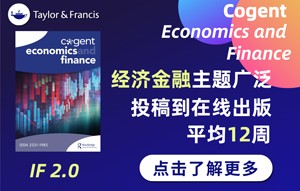

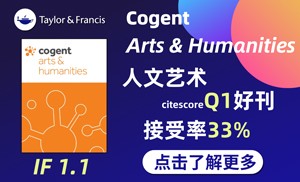
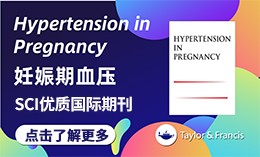




















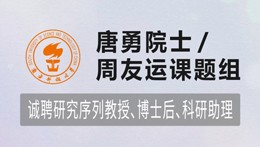
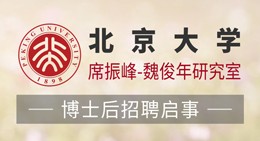



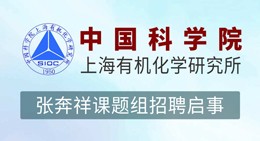
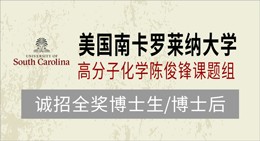




 京公网安备 11010802027423号
京公网安备 11010802027423号